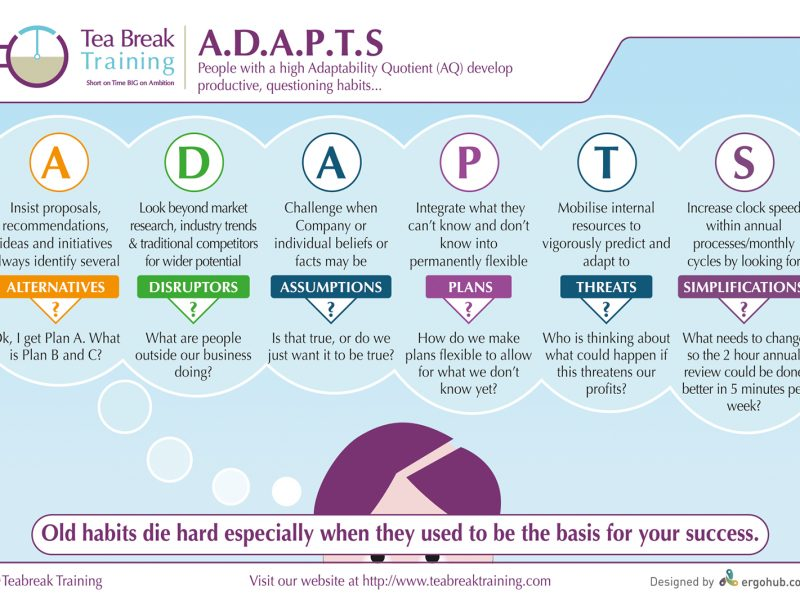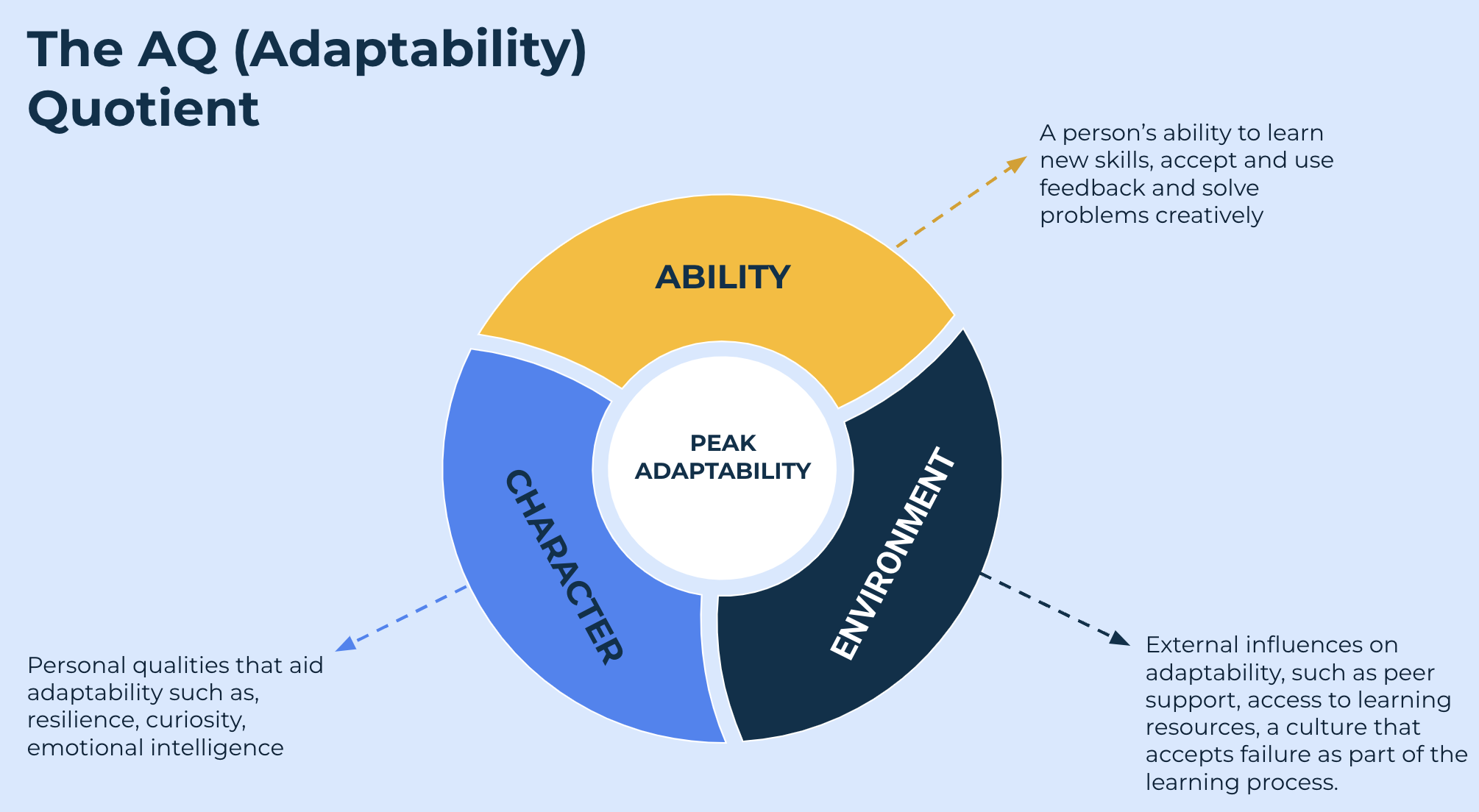Adaptabilty through AQ and Adapts Model
Overview on Adapts
Source for ADAPTS that was derived from HBR article and mattered via [[Adaptability- The New Competitive Advantage]]

Overview on Adaptability Quotient
Linked with [[How high is your adaptability quotient and why is it important-]] and [[AQ - Adaptability Quotient and the Growth Mindset]] and visualized via

Combining Adapts and scan each dimension with AQ
The ADAPTS model is a framework that can be applied to improve adaptability in various contexts, including personal development, project management, and organizational change. The Adaptability Quotient (AQ) is a measure of how well an individual or an organization can adapt to change. Combining the ADAPTS model with AQ involves using the principles of ADAPTS to enhance the components that contribute to a high AQ.
Here’s how the ADAPTS model can be integrated with the concept of AQ:
-
Alternatives (A): Encourage the exploration of different solutions and perspectives. For individuals, this means being open to new ideas and approaches. For organizations, it means fostering a culture where innovation and creativity are valued. This directly contributes to the ‘Learning’ and ‘Flexibility’ aspects of AQ.
-
Disruptors (D): Recognize and prepare for potential disruptors in your industry or personal life. This entails staying informed about trends and changes, which ties into the ‘Curiosity’ and ‘Problem-Solving’ components of AQ.
-
Assumptions (A): Regularly challenge your own assumptions and those prevalent in your organization. By doing so, you can avoid complacency and remain open to new information, which can lead to a higher ‘Learning’ quotient within AQ.
-
Plans (P): Develop flexible plans that can adapt to changing circumstances. This flexibility is central to AQ and ensures that you are prepared to pivot when necessary, enhancing ‘Problem-Solving’ and ‘Flexibility’.
-
Threats (T): Anticipate and plan for potential threats. This forward-thinking approach is part of being resilient, which is a key trait in AQ. It involves not only identifying possible risks but also having strategies in place to mitigate them.
-
Speed (S): Agility and the ability to act quickly are important in adapting to new situations. A high AQ requires the ability to respond rapidly and effectively to change, which the ‘Speed’ aspect of ADAPTS emphasizes.
By implementing the ADAPTS framework, an individual or organization can systematically work on improving adaptability. Using ADAPTS to guide actions and strategies can lead to the development of a higher AQ, as it addresses the core areas that are necessary for successfully navigating change. For instance, at Blinkist, applying the ADAPTS model could mean regularly exploring new content delivery methods, staying ahead of technological trends, and maintaining a flexible strategy to respond quickly to changes in consumer behavior or competitive challenges.
Linking
Notes mentioning this note
There are no notes linking to this note.